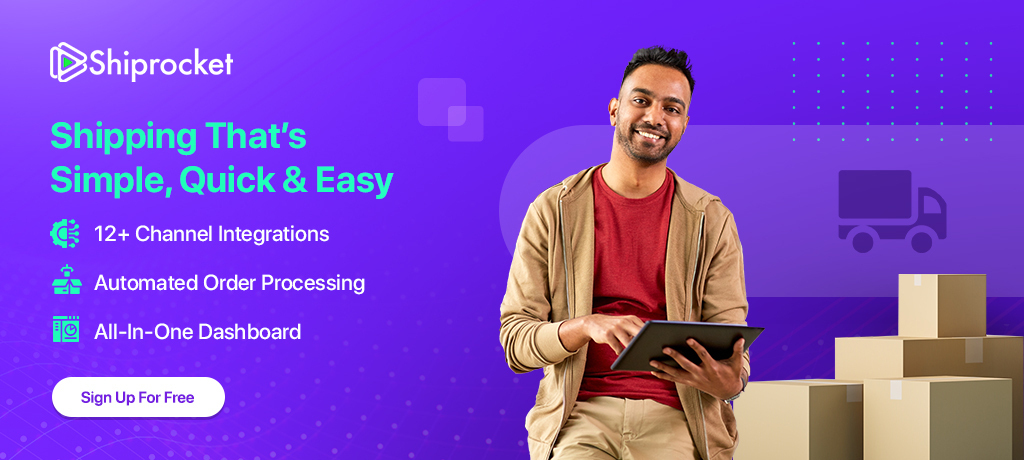Omnichannel eCommerce: Role, Benefits, & Strategy
eCommerce industry analysts have found that 44% of B2C buyers and 58% of B2B buyers research a product online before buying it at physical stores. Even within stores, much comparison and analysis continues through online searches. So, what should businesses do to handle customers from multiple sales channels?
The first thing businesses need to change in order to handle online buyers better is their sales approach. The shift to unified sales channels can become the best strategy for your business. Whether customers use in-store kiosks, multiple devices or platforms, the sales experience should be consistent. Statistically, nearly 73% of online buyers use more than one sales channel to purchase online.

But how does multichannel differ from omnichannel?
The present eCommerce practices show three different types of sales channel approaches a business can offer: Single channel, multichannel and omnichannel eCommerce.
Single channel eCommerce:
This is the traditional method of selling products using a single sales channel. This can be having only one physical store, a webshop, a market, or an online marketplace. However, a single channel restricts the flow of traffic to your store. To enhance the buying experience, you must offer multiple channels where customers can arrive and buy a product.
Multichannel eCommerce:
This means businesses operate through multiple channels to reach buyers. These include mobile websites, applications, street-side stores, social media platforms, and email. However, the different channels are not integrated.
Omnichannel eCommerce:
An effective way to manage multiple channels is to integrate them into a unified platform. This is called the omnichannel eCommerce strategy. The advantage of this is that customers can start searching on one channel, move to another, and eventually purchase from there. Using multiple integrated channels enhances customer engagement.
How can Omnichannel eCommerce Benefit Your Business?
Many retailers exploring strategies to improve business performance have succeeded with omnichannel eCommerce. Using market-ready omnichannel eCommerce platforms has simplified the move to unified sales channels for these businesses. Some of the benefits are:
- Same Brand Messaging: One of the significant advantages of using an omnichannel eCommerce platform is consistency in brand messaging across all channels. It eliminates the need for different voices/styles or taglines for your various sales channels. Regardless of the customer’s channel, the messaging is always the same.
- Tracking customers’ buying patterns: Omnichannel eCommerce allows businesses to follow a collection and find the customer’s path to complete a purchase across the channels. A wealth of data is collected, and companies can structure customer behaviour across their channels, thereby personalising the customer’s journey.
- Create a personalised buying experience: Omnichannel eCommerce gives you the tools to create a personalised customer experience. Businesses can identify ‘patterns’ of the buyer’s behaviour by analysing the customer journey across each sales channel. Software programmes recreate the buyer’s first experience on the website, ensuring a similar one for future purchases. Analysts believe there will be an increase of 30% in lifetime value every time buyers have a personalised buying experience through unified channels.
Hurdles for Implementing a Successful Omnichannel
Although the benefits of omnichannel are well-known, businesses often face difficulty implementing sales integration for several reasons. Some of the challenges faced by omnichannel eCommerce providers are listed below:
- Out-of-stock situations
It is a common practice for businesses to display stock only in their physical locations and use the images of this display for online sales. This results in several complications. The best-selling products often go out of stock immediately due to online orders. This leaves in-store buyers in need of help to complete their purchase.
Business owners must address such a mix-up by ensuring they do not list their best-selling products online. These stocks should be reserved for their in-store channel only, as customers try to visit the location to purchase that particular product.
- Lack of infrastructure
The biggest challenge limiting businesses to move on to the omnichannel platform is technology transfer. The default technology stores use cannot support the full-fledged transactional needs of omnichannel eCommerce.
- Finding reliable partners
A more significant hurdle businesses face in fulfilling their customers’ orders is the need for a reliable and cost-effective shipping partner. Logistics shipping and eCommerce partners need to have a common ground to be successful.
Framing an Exemplary Omnichannel Strategy: Steps
Any business adapting or changing for modes needs resources, effort, and experience. Here is a fail-proof-only channel strategy that you can explore for your business.
Step 1: Research your buyer
One of the most crucial steps in shifting to an omnichannel strategy is thoroughly understanding the customers you will be servicing. You must know your potential buyer’s interests, behaviours, and needs. Collect data regarding your buyers. This will help you provide them with customised services and product recommendations. You can gather information about consumers, like their preferences and priorities through
inquiring about their experiences with your brand, getting feedback from them, and using various social media platforms and social listening tools.
Step 2: Research the channels you need to add
Research holds the key to identifying the proper sales channels for the target audience. As a result, staff will have insight into the customer expectations when they arrive on their channel. It helps avoid assumptions about the customers’ approach to the sales channel. You can do this by identifying what your target customers do and on which platforms.
Step 3: Provide a purpose for every channel
This step is very important as every sales channel should serve a particular purpose. If one channel is used for customer interaction, a second should provide news updates, and a third should provide information, and so on.
Step 4: Connect all the channels
You must integrate all the channels. What is the best way to execute a perfect integration? Analysts recommend using the right technology tools to understand your customers and identify their touch points when integrating. It helps to know how they buy your brand before you begin connecting the channels. Do they read reviews on your website, or do social ads trigger their journey to your store? On which day, did the customer finally make the purchase? Was it in your physical store or online store?
Step 5: Maintain channels
In this final step, the omnichannel strategy is set into motion. Testing and documenting every step is essential. It is necessary to always document the buyer pattern as it helps in sorting customer claims. It ensures that the customer is related to your website and store and keeps returning.
Future of Omnichannel Commerce
The basic structure of eCommerce continues to change as newer technologies and commerce software are launched. In fact, companies like Amazon which started off as a web-only brand were compelled to open physical stores to give customers the feel of the products before they went on to buy online. This is a strategy that defined the future of omnichannel commerce. Amazon, as the pioneer of online shopping, understood that different sales channels are a norm in line with buyer psyche and integration of these channels is the future of eCommerce.
In the upcoming years, industry experts believe that mobile apps will be the next most crucial channel for shopping. For eCommerce, mobile apps are expected to create a wider customer base, especially in tier 2, and tier 3 markets. By default, the mobile sales channel has an omnichannel approach with its online and offline touchpoints, enabling unified services. For example, businesses with mobile apps are able to quickly look up product details and identify if it is out of stock, even for in-store buyers, delivering unified services.
The most awaited development in the eCommerce industry is the adoption of artificial intelligence in customer servicing. It is expected to become the underlying weapon to craft powerful omnichannel strategies. The capabilities of AI and competitive business innovation are connecting the dots across sales channels to ensure engaged customer journeys.
Conclusion
Every business needs to realign its strategies from time to time, to create uninterrupted services for its customers. In recent years, omnichannel eCommerce has become an effective and powerful way for a single, unified shopping and services experience. Integrated with business intelligence like buyer behaviour, deep analysis of buying needs of customers and informative product specifications, omnichannel eCommerce platforms are delivering personalised buyer journeys.
Retailers should unlock the advantages of omnichannel commerce software and integrate all the sales channels to create a unified, uninterrupted buyer experience and retain customer loyalty. The future of eCommerce is already here, with AI and software powering retail commerce and automated, error-free and streamlined processes. You need to make the right software vendor-partner choices to amplify your business.
Omnichannel AI is the latest trend in eCommerce to create consistent messaging and unified brand exposure. The purpose of using AI in this model is to improve marketing intelligence. The latest marketing software platforms now include omnichannel strategy options.
The uniqueness of Amazon was its pioneering eCommerce practices like unified eCommerce solutions. It provides a personalised experience and delivers a standard brand message across all channels.
A typical example of omnichannel eCommerce software is Shopify Plus. It is a point of sales and eCommerce system integrated service for retailers to deliver a seamless shopping experience.






